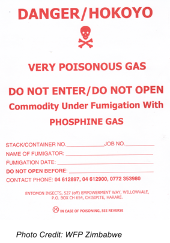- What We Do
- Agriculture and Food Security
- Feed the Future
- Food Assistance
- Agricultural Markets and Trade
- Agricultural Capacity Development
- Global Nutrition
- Sustainable Agriculture
- Investing in Agricultural Research and Development
- USAID's Legacy in Agricultural Development
- Democracy, Human Rights and Governance
- Economic Growth and Trade
- Education
- Ending Extreme Poverty
- Environment and Global Climate Change
- Gender Equality and Women's Empowerment
- Global Health
- Water and Sanitation
- Working in Crises and Conflict
- U.S. Global Development Lab
USAID Development Food Assistance
For up-to-date environmental compliance policies and procedures, refer to the current Request for Applications (RFA) for USAID Development Food Assistance. These policies tailor the USAID environmental compliance regulation (22 C.F.R. 216) to USAID food assistance projects and emphasize the integration of environmental safeguards into project design through environmental safeguards budgeting and monitoring.

Safe and Effective Fumigation
All USAID food assistance projects must protect valuable, life-saving agricultural commodity from insect infestation at warehouses in ports and distribution points globally. Commodity is protected with the highly-effective, but very toxic, pesticide phosphine gas. To ensure the safe and effective use of this gas, USAID conducted a Programmatic Environmental Assessment (PEA) for Commodity Protection by Phosphine Fumigation in USAID Food Aid Programs which identified gaps and corrective actions for fumigation at warehouses.
Annual Reporting
To verify that environmental safeguards are in place and operating as planned, an Environmental Status Report (ESR) is submitted by Office of Food for Peace awardees on an annual basis. This report describes the USAID projects’ current status of implementing required environmental safeguard mitigations for a multi-year project. All awardees include an ESR as an appendix to the Pipeline Resource Estimate Proposal (PREP) that is submitted to USAID annually. The ESR captures information both, looking backward at results, successes and or hurdles encountered, as well as, looking forward at plans and projects’ needs for implementing environmental safeguard actions in the next year of implementation.







Comment
Make a general inquiry or suggest an improvement.